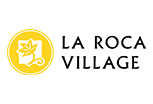Catalonia’s home-grown art nouveau movement, modernisme, emerged between the end of the 19th and beginning of the 20th centuries, with Barcelona being its greatest exponent. It produced some outstanding examples of architecture and the decorative arts. The Cerdà Plan, Ildefons Cerdà’s town planning project that extended the city beyond its medieval walls to create the new Eixample district, provided space for modernista architecture to grow.
This architectural style, which can be found in residential and industrial buildings, is characterised by its curved forms inspired by nature, organic structures, asymmetrical layouts and the use of new materials and new techniques, such as trencadís mosaic made using shards of broken pottery and tiles.
Barcelona is the European city with the most art-nouveau, or modernista, buildings. Not for nothing have nine of its modernista landmarks been awarded World Heritage status by UNESCO. The modernista façades are associated with the Barcelona bourgeoisie as well as some of the city’s foremost architects. One example is the so-called “manzana de la discordia”, or block of discord, where the architects Lluís Domènech i Montaner, Josep Puig i Cadafalch and Antoni Gaudí, built a house for the Lleó Morera, Amatller and Batlló families respectively. Although the Eixample, and its heritage quarter, the Quadrat d’Or, in particular, have the greatest number of modernista buildings, they can also be found in other parts of Barcelona. The Torre Bellesguard, at the foot of the Collserola ridge; the Palau Güell, in the Raval; the Casa Vicens, in Gracia; the Casa Bruno Quadros, on La Rambla; the Col·legi de les Teresianes, in Sant Gervasi; the former Casaramona textile mill, on Montjuïc; and many more buildings that won’t fail to impress, are some other examples.

















